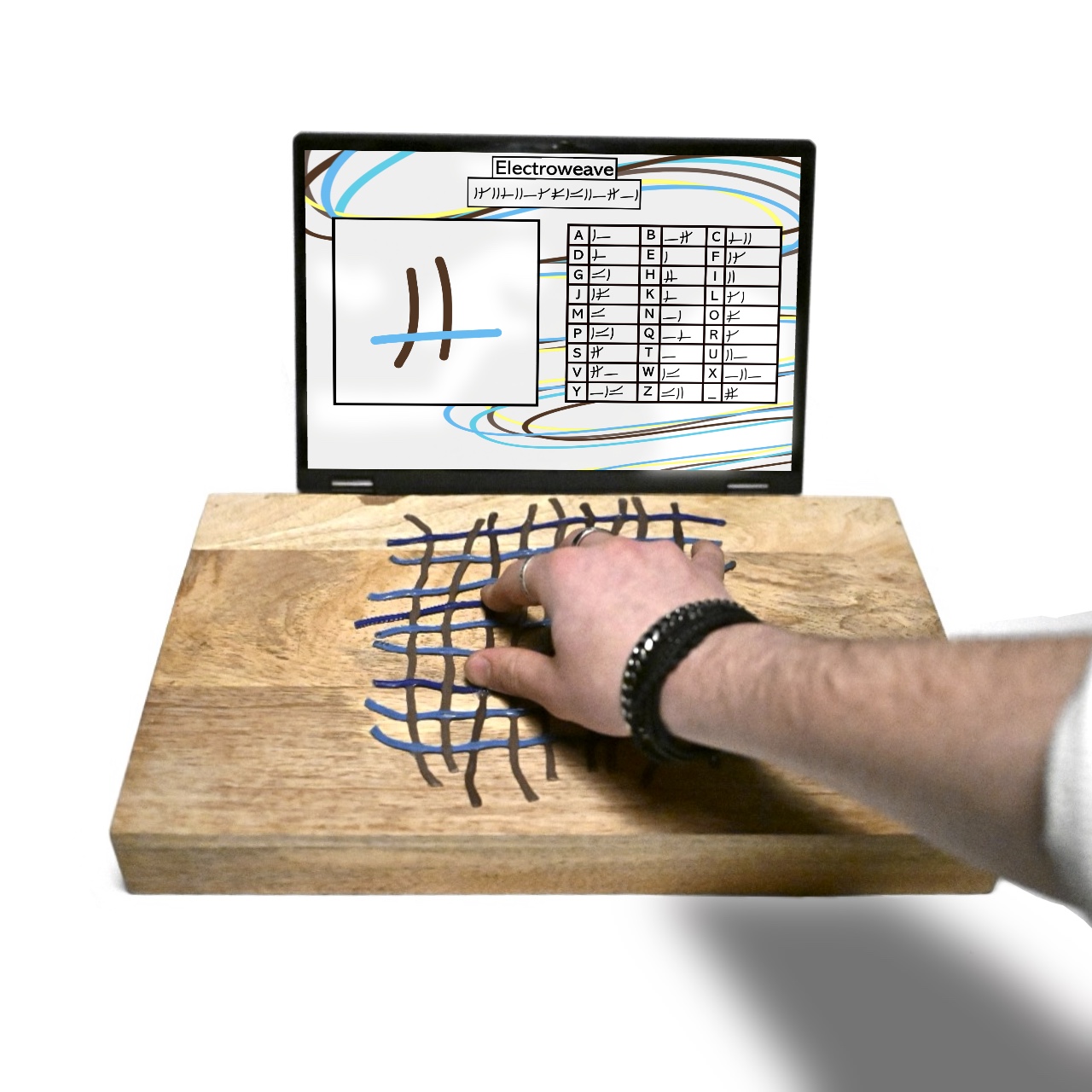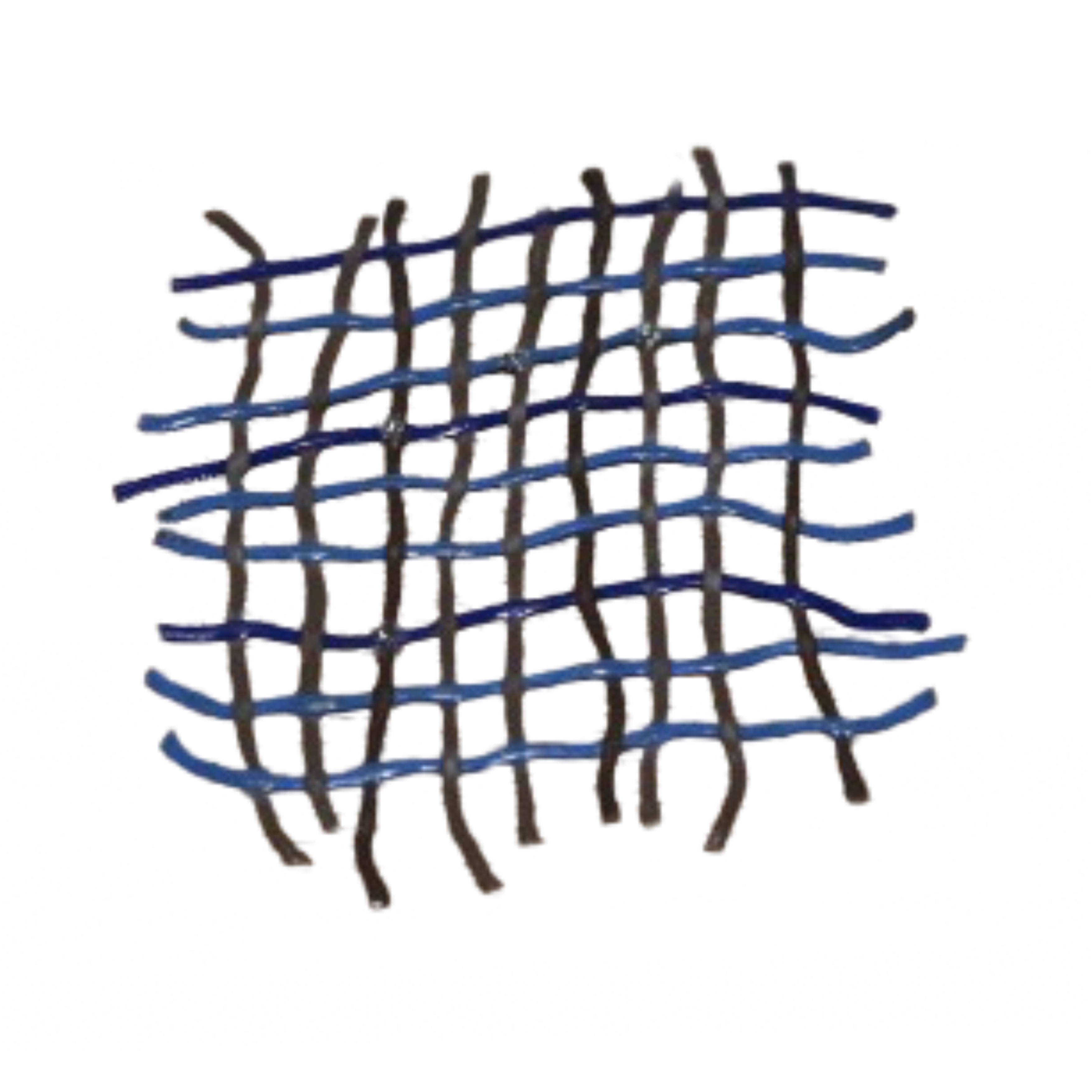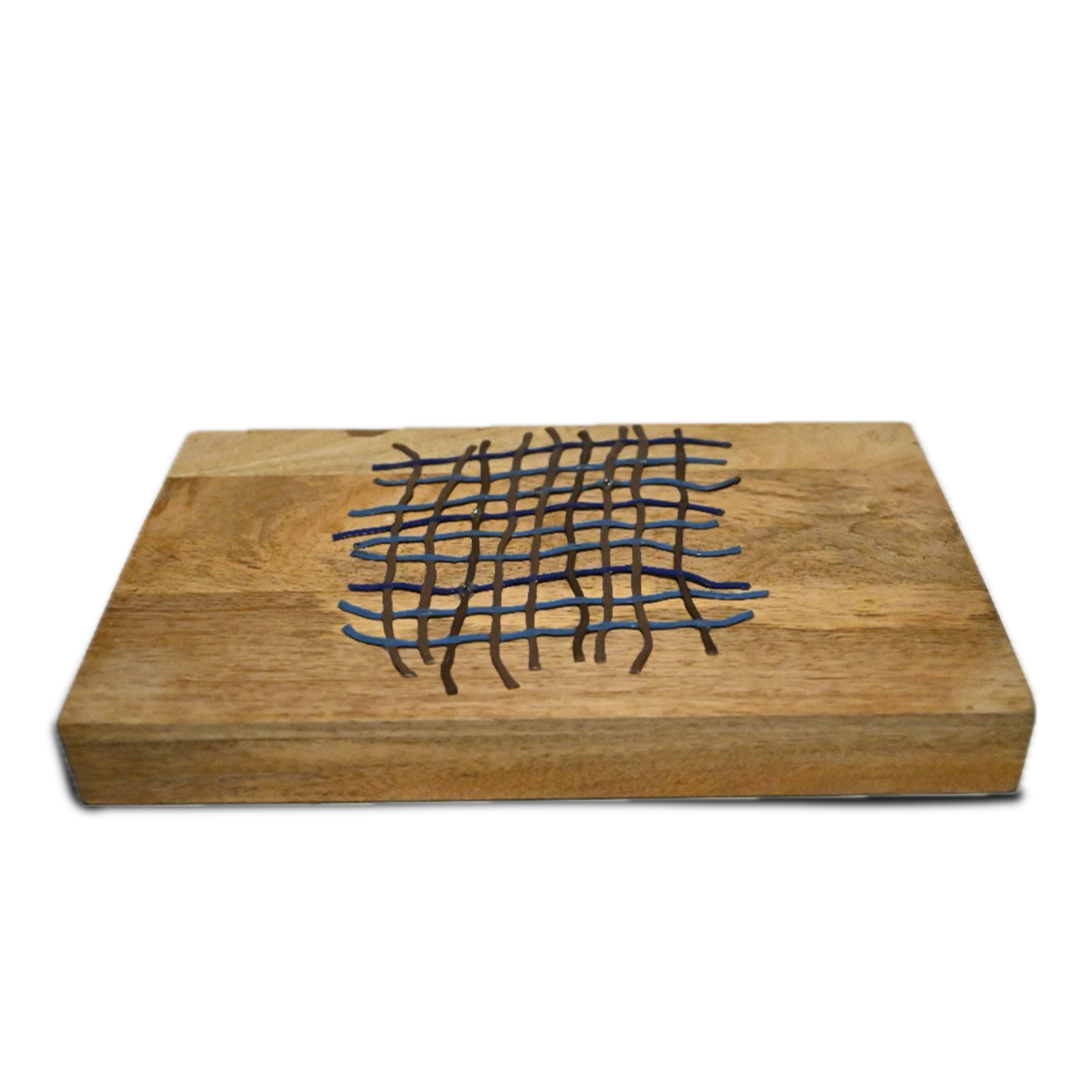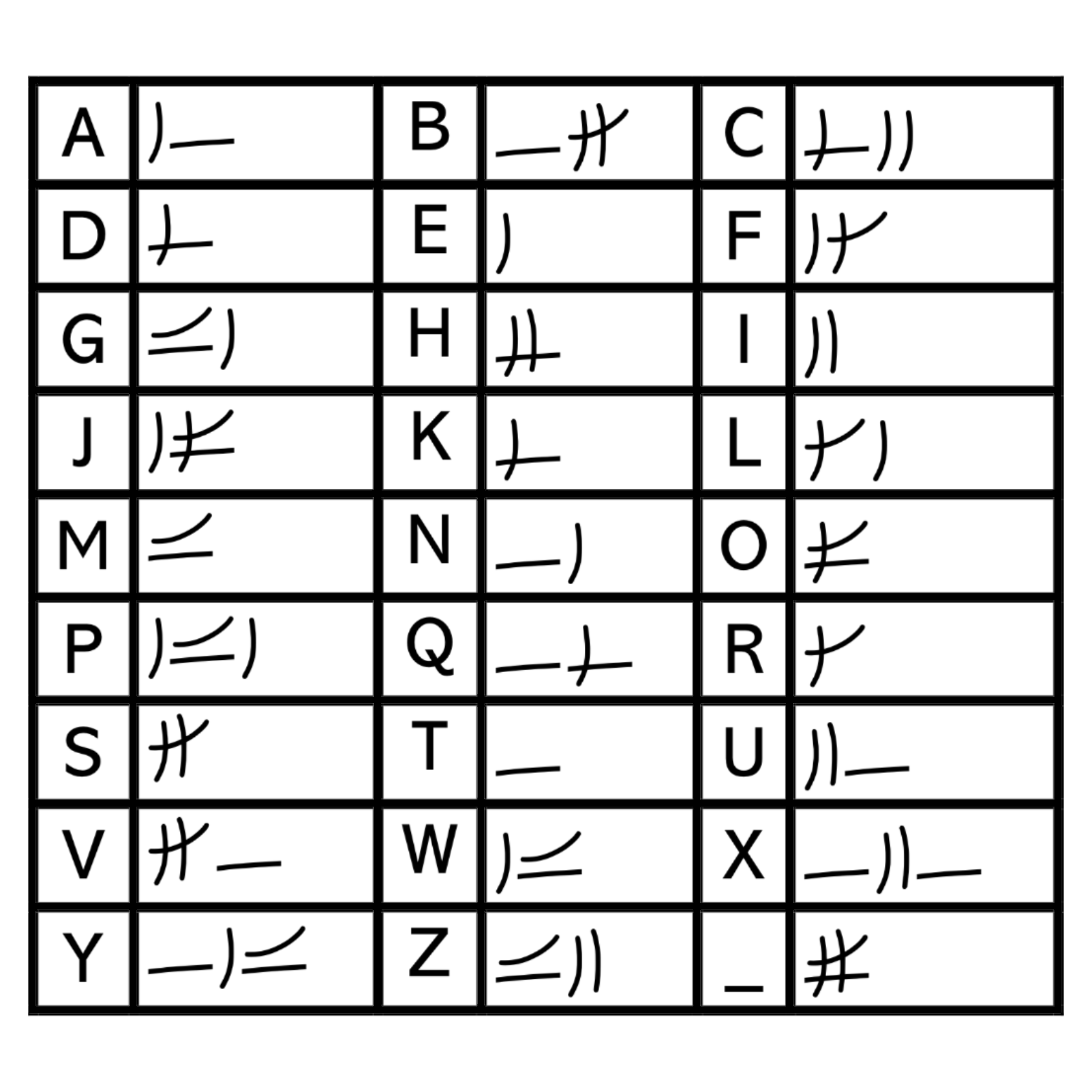Material Thinking:
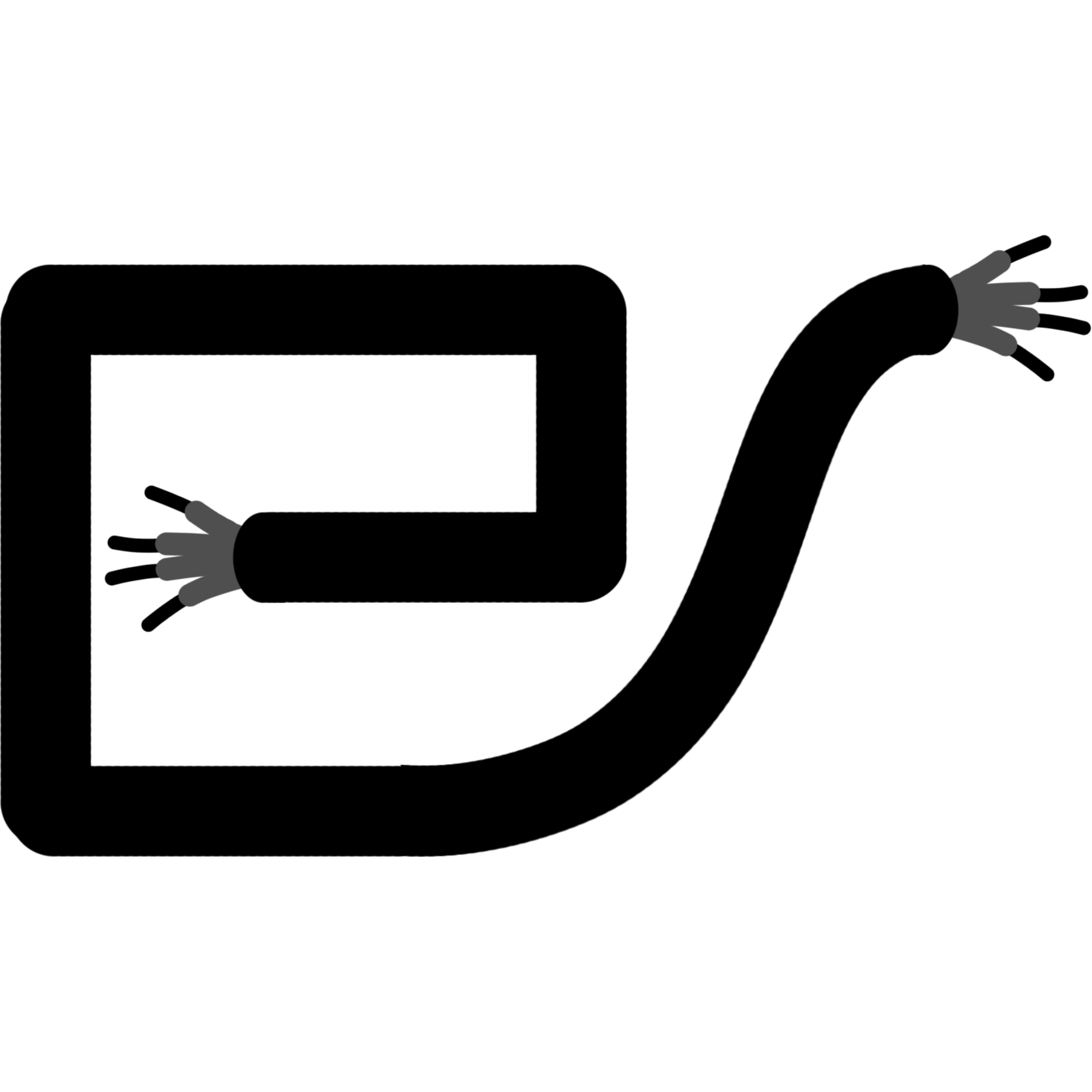
lectroweave
afaagacfhadaaceca
A Tactile Cipher for Visual Communication
What is Electroweave?
In an era where digital and visual communication dominates, Electroweave serves as an innovative communication system that transforms conductive materials into a tactile cipher. With the use of an interactive mesh, users can generate structured visual patterns on a screen that enable the encoding of messages. It offers a medium that is both touch-based and visually expressive. Drawing inspiration from traditional ciphers, it functions as an alternative form of messaging, artistic creation, and digital interaction.
Process and Making
By weaving together a conductive mesh embedded with four distinct points of contact, users can generate visual patterns on a screen effectively encoding messages in a structured yet flexible format. The wires, not hidden but on display, stand proud as the main feature of the tool, not as something to be hidden away. The weaved mesh serves as an interactive interface, allowing the users to engage and communicate in an experimental, accessible, non-verbal and tangible way.
Comunication/Cypher
Inspired by Morse code, one of the earliest telecommunication systems, it functions as a contemporary cypher, providing an alternative means of communication that is both tactile and visual. Furthering the connection to wires, the cyper has been styled and inspired by my wire experiment No.10, as four crossing lines, resembling a hashtag. The structured patterns created by contact points recall the binary logic of early telegraphy, with an artistic twist.
Using the table beside you can encode and decode your own text!
Significance and Applications
More than just a visual language, Electroweave, serves as a cypher for secure or private messaging, where visual patterns replace conventional text, and opens new ways for creative coding, experimental typography, and digital art, in design. It is a window into how important wires are to our lives, their history in communication, and how underappreciated they are.
© 2025 Jani Buńka. All rights reserved


